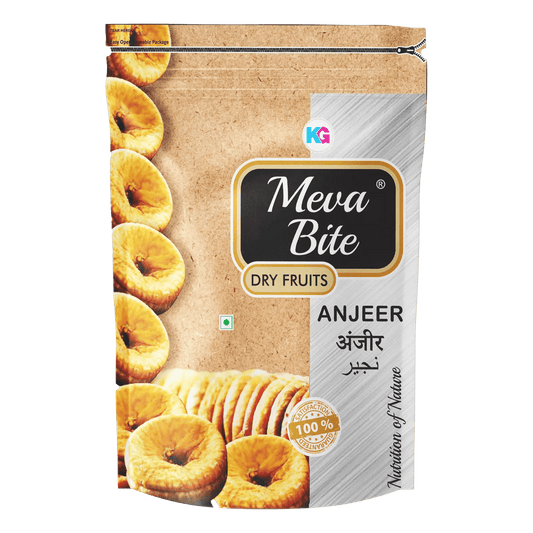What exactly are fox nuts, and where do they come from?
Summary: Fox nuts, also known as makhana, are seeds from the Euryale ferox water lily plant. They primarily grow in the stagnant water bodies of Eastern Asia, including India, Korea, and Japan.
Detailed explanation:
- Fox nuts are the edible seeds of the Euryale ferox plant, a member of the water lily family.
- They are commonly found in the shallow waters of wetlands, ponds, and lakes.
- The plant has large, circular leaves that float on the water's surface.
- Fox nuts have been cultivated for centuries, particularly in regions of India like Bihar and West Bengal.
- These seeds are known by various names, including makhana, gorgon nut, and phool makhana.
Difference between fox nuts and lotus seeds?
Summary: Fox nuts and lotus seeds are different. Fox nuts come from the Euryale ferox plant, while lotus seeds are from the Nelumbo nucifera plant. They have distinct appearances and nutritional profiles.
Detailed explanation:
- Fox nuts are larger and more spherical compared to lotus seeds.
- Lotus seeds have a distinct dimple on one end, while fox nuts do not.
- The nutritional content differs, with fox nuts generally being higher in protein and lower in fat.
- Fox nuts have a more neutral flavor, while lotus seeds have a slightly sweet taste.
- Both are used in traditional medicine and cuisine but are not interchangeable in recipes.
How are fox nuts harvested from the water?
Summary: Fox nuts are harvested by hand from shallow water bodies. Harvesters wade into the water, locate mature seed pods, and carefully extract them. The seeds are then separated from the pods for processing.
Detailed explanation:
- Harvesting typically occurs during the late summer or early autumn months.
- Harvesters use small boats or wade into the water to reach the plants.
- Mature seed pods are identified by their dark color and are gently plucked from the plant.
- The pods are collected in baskets or nets and brought to the shore.
- Seeds are manually extracted from the pods, a labor-intensive process that requires skill and patience.
What's the traditional process of making fox nuts?
Summary: The traditional process involves sun-drying the harvested seeds, roasting them over an open fire, and then puffing them by applying sudden heat. This results in the characteristic light, crispy texture of fox nuts.
Detailed explanation:
- Harvested seeds are first thoroughly cleaned to remove any debris.
- The seeds are then spread out to dry in the sun for several days.
- Once dried, the seeds are roasted in a large, shallow pan over an open fire.
- The roasted seeds are then quickly transferred to a hot sand bed.
- The sudden temperature change causes the seeds to puff up and expand.
- The puffed fox nuts are then separated from the sand and cooled.
- Finally, they are sorted and packaged for distribution.
Are there any modern methods used in fox nut production?
Summary: Yes, modern fox nut production incorporates mechanized processes for cleaning, drying, and puffing. Machine roasters and hot air puffing machines have replaced some traditional methods, improving efficiency and consistency.
Detailed explanation:
- Mechanical cleaners are used to remove debris more efficiently.
- Industrial dryers have replaced sun-drying in some operations.
- Automated roasting machines ensure consistent roasting temperatures.
- Hot air puffing machines have been developed to replace the sand bed method.
- Sorting and packaging processes have been mechanized for higher output.
- Quality control measures, including metal detectors, have been implemented.
- Some producers use controlled atmosphere storage to extend shelf life.
How long does it take to process fox nuts from harvesting to packaging?
Summary: The process of making fox nuts from harvesting to packaging typically takes 7-10 days. This timeline can vary depending on weather conditions and the production methods used (traditional vs. modern).
Detailed explanation:
- Harvesting: 1-2 days
- Cleaning and sorting: 1 day
- Sun-drying (traditional method): 3-5 days
- Machine drying (modern method): 1-2 days
- Roasting and puffing: 1 day
- Cooling and final sorting: 1 day
-
Packaging and quality control: 1 day
Are fox nuts naturally gluten-free?
Summary: Yes, fox nuts are naturally gluten-free. They do not contain any wheat, barley, rye, or other gluten-containing grains, making them a safe option for people with celiac disease or gluten sensitivity.
Detailed explanation:
- Fox nuts are seeds, not grains, and therefore do not naturally contain gluten.
- They are often recommended as a gluten-free snack alternative.
- However, cross-contamination during processing is possible, so always check labels.
- Some flavored fox nut products may contain gluten-based additives.
- For those with severe gluten sensitivity, look for certified gluten-free fox nut products.
What nutritional benefits do fox nuts offer?
Summary: Fox nuts are nutrient-dense, offering high protein content, low fat, and various minerals. They are rich in antioxidants, making them beneficial for overall health, weight management, and potentially reducing inflammation.
Detailed explanation:
- High in protein: Contains about 9.7g per 100g, supporting muscle health.
- Low in fat: Only 0.1g per 100g, making them ideal for weight management.
- Rich in carbohydrates: Provides sustained energy.
- Good source of minerals: Contains magnesium, potassium, and phosphorus.
- Antioxidant properties: May help reduce oxidative stress.
- Low glycemic index: Suitable for blood sugar management.
-
Fiber content: Aids in digestion and promotes feeling of fullness.
Can I make fox nuts at home, or are they only commercially produced?
Summary: Fox nuts are primarily commercially produced due to the specific growing conditions and processing requirements. While it's possible to roast or flavor store-bought raw fox nuts at home, producing them from scratch is not practical for most individuals.
Detailed explanation:
- Commercial production requires access to water bodies where the plants grow.
- The harvesting process is labor-intensive and requires specific skills.
- Puffing the seeds requires high heat and specialized equipment.
- Home roasting of raw fox nuts is possible using an oven or stovetop.
- Flavoring store-bought fox nuts at home with spices or seasonings is common.
- Growing Euryale ferox plants at home is challenging due to specific water conditions needed.
- For most consumers, purchasing commercially produced fox nuts is the most practical option.
Are there different varieties or qualities of fox nuts available in the market?
Summary: Yes, fox nuts come in different varieties and qualities. They are typically categorized based on size, color, and processing method. Higher quality fox nuts are larger, whiter, and more uniformly shaped.
Detailed explanation:
- Size grades: Usually categorized as small, medium, and large.
- Color variations: Range from off-white to creamy white, with whiter being preferred.
- Processing method: Traditional sand-roasted vs. machine-puffed varieties.
- Flavored varieties: Plain, salted, spiced, or sweet coatings available.
- Organic vs. conventional: Some producers offer certified organic fox nuts.
- Regional varieties: Different regions may produce slightly different qualities.
- Premium grades: Some brands offer "handpicked" or "extra large" premium varieties.
Conclusion
Fox nuts, or makhana, are a fascinating and nutritious food with a rich history and complex production process. From their aquatic origins to the intricate harvesting and processing methods, these seeds offer a unique blend of tradition and modern food technology. As we've explored, fox nuts are not only a tasty snack but also pack a powerful nutritional punch, being gluten-free, low in fat, and high in protein. Whether you're health-conscious, looking for gluten-free options, or simply curious about unique foods, fox nuts are certainly worth exploring. As the market for these versatile seeds continues to grow, we can expect to see even more varieties and innovative products featuring fox nuts in the future.







